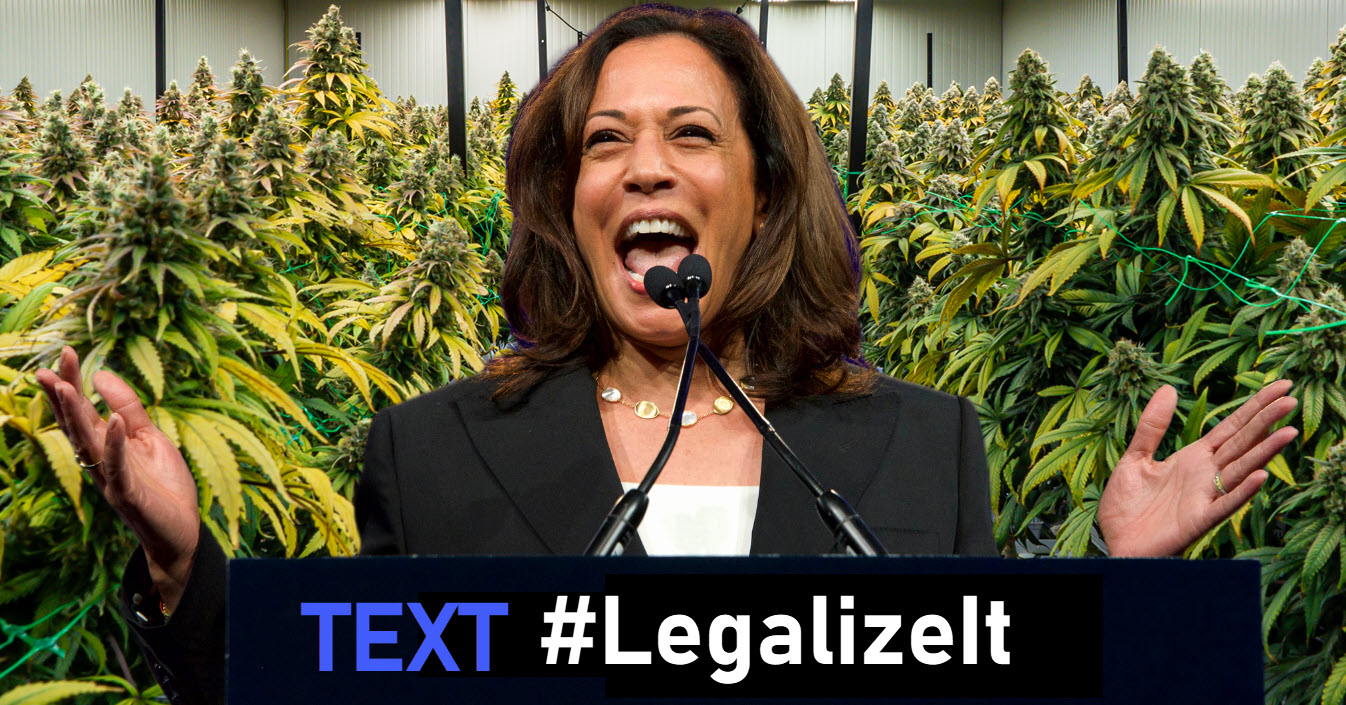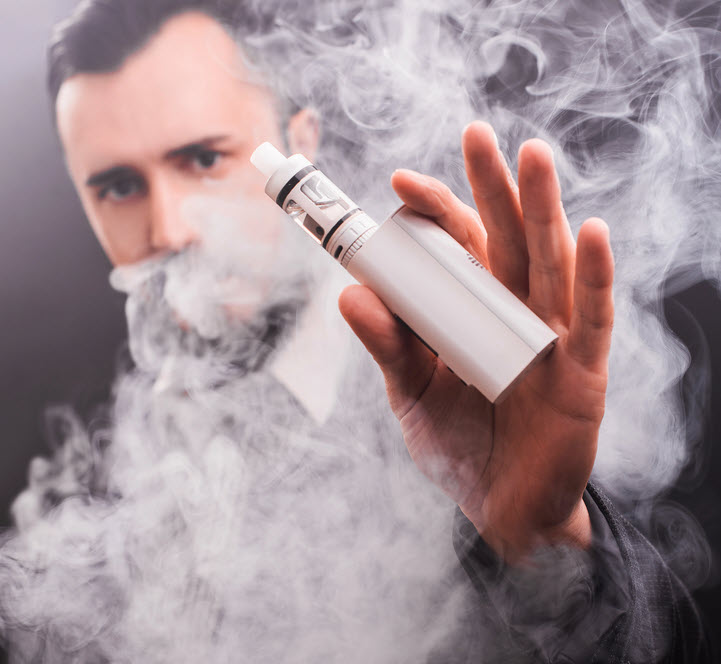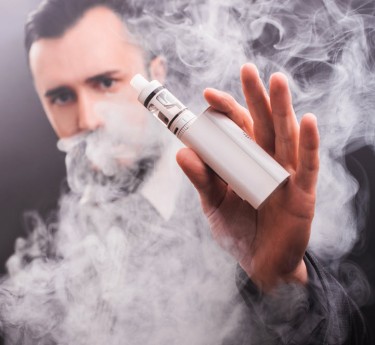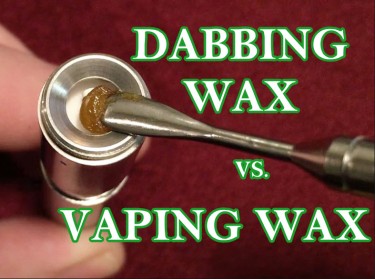Cannabis News
Ashamed of Your Body and Feel Uncomfortable in Your Own Skin ?
Published
5 hours agoon
By
admin

Pioneering research from Columbia University in New York suggests that psilocybin, the key component in magic mushrooms, may help people with body dysmorphic disorder (BDD). The study, published in Psychedelics, looked at how psilocybin affected brain activity in BDD patients, and it found significant alterations in brain connections that might help lessen the disorder’s obsessive thinking patterns.
Understanding Body Dysmorphic Disorder: A Hidden Struggle Beneath the Surface
A severe mental illness known as body dysmorphic disorder (BDD) is typified by an obsessive, illogical fixation on perceived physical defects that are usually undetectable to others. Extreme emotional anguish brought on by these compulsive worries might result in social isolation, anxiety, and depression. BDD sufferers frequently get fixated on characteristics like body type, facial features, or skin texture. They continuously try to “correct” these flaws, usually by over-grooming, cosmetic surgery, or social distancing.
For many patients, especially those with severe instances, traditional therapies including cognitive-behavioral therapy (CBT) and antidepressant drugs have had only patchy success. This has left a major percentage of the BDD population in search of more effective treatments. In this recent study, a single 25 mg dosage of psilocybin, the hallucinogenic ingredient in magic mushrooms, was given to eight persons with moderate-to-severe BDD using COMP360, a synthetic formulation made by COMPASS Pathways. Brain imaging and symptom evaluations were performed on individuals following treatment to better understand how psilocybin can help those who are caught in obsessive thinking cycles.
Study Uncovers Long-Lasting Symptom Relief Through Psilocybin Treatment
The study found that a single dose of psilocybin improved brain connectivity significantly, especially in networks involved in cognitive control and emotional regulation. One of the most significant findings was increased activity in the Executive Control Network (ECN), a brain area that controls decision-making, cognitive flexibility, and goal-directed behavior. This increased connection in the ECN implies that psilocybin may aid patients in breaking away from the inflexible and compulsive cognitive processes that define body dysmorphic disorder (BDD).
Additionally, the ECN showed strengthened connections with the Default Mode Network (DMN), a brain region involved in self-reflection and internal thought processes, often hyperactive in individuals with BDD. The improved communication between these networks may reduce the intensity of negative self-focused rumination, allowing patients to see themselves and their perceived flaws in a less critical and more objective light. Another key player, the Salience Network, which helps the brain prioritize important stimuli and emotions, also demonstrated improved connectivity. This shift could potentially allow individuals with BDD to redirect attention away from their obsessive concerns toward more balanced and healthy thought processes.
Crucially, these alterations in brain connection were long-lasting. Following a single psilocybin session, research participants reported continuing remission from their BDD symptoms, with benefits lasting for as long as 12 weeks. This prolonged duration of symptom alleviation is especially significant since it implies that psilocybin’s effects on brain activity may provide long-term advantages, in contrast to traditional therapies that frequently need ongoing usage in order to preserve improvements.
These results demonstrate the ability of psilocybin to support long-term, more permanent changes in brain activity that promote emotional resilience and a healthy sense of self in addition to its ability to reduce symptoms in the short term.
A Promising Step Forward, But More Research Is Essential
While psilocybin therapy for body dysmorphic disorder (BDD) has advanced significantly with this trial, the researchers warn that more thorough research is required before it can be widely used. Although there is cause for optimism, the results also point to significant shortcomings that need to be resolved in more research in order to properly comprehend the safety and efficacy of psilocybin for this particular issue.
The small sample size of this study—just eight participants—is one of its main shortcomings. Though these were encouraging results, larger and more varied studies are needed to demonstrate that psilocybin may reliably provide comparable benefits in a broader population of BDD sufferers. It is also challenging to ascertain whether the claimed benefits were caused by the effects of psilocybin or were affected by other variables, such as the placebo effect or the controlled atmosphere in which the individuals were treated because the study did not include a placebo control group.
Dr. Xi Zhu, the lead researcher, and his team underline the need for randomized controlled trials (RCTs) in appropriately assessing psilocybin’s treatment potential for BDD. These studies would compare the effects of psilocybin to those of placebo or other therapies in a double-blind environment, with neither the subjects nor the researchers knowing which therapy was given. Such thorough research would give greater proof for psilocybin’s efficacy and aid in the development of standardized dose regimens, both of which are presently missing in the area of psychedelic-assisted therapy.
Furthermore, the precise processes behind the long-lasting alterations in brain connections that psilocybin appears to bring about and which are correlated with the alleviation of symptoms remain unclear. It will take further investigation to learn how psilocybin interacts with the brain at the molecular level and why its effects tend to last long after the substance has left the body. Comprehending these pathways may aid in the improvement of psilocybin-based treatments and may augment their efficacy.
The results of the study represent a significant advancement in the search for new treatments for disorders like BDD, which have traditionally resisted standard medical interventions, notwithstanding these obstacles. With the ongoing advancements in psychedelic research, psilocybin may prove to be an effective treatment for a variety of mental health conditions marked by compulsive thinking and skewed self-image, including BDD.
In summary, much more research is needed to confirm psilocybin’s promise as a therapy for BDD, even if the current study offers a promising basis. Progress in this study and the realization of psychedelics’ full therapeutic potential will require larger trials, placebo controls, and a better comprehension of the drug’s effects on the brain.
Bottom Line
This groundbreaking study demonstrates psilocybin’s potential as a unique therapy for Body Dysmorphic Disorder (BDD), which can provide long-term symptom alleviation by modifying brain connections. The increased connection across brain networks involved in cognitive control, emotional regulation, and self-reflection shows that psilocybin may help lessen obsessive and negative thinking patterns. While the findings are encouraging, particularly for individuals who are resistant to standard therapy, further research with bigger sample sizes and controlled trials is required to validate the efficacy and safety of psilocybin for BDD.
CANNABIS LOWERS BMI AND BODY INFLAMMATION? READ ON…
HOW DOES CANNABIS HELP LOWER BMI AND BODY INFLAMMATION?
You may like
-


We Need to Legalize Weed and Decriminalize Smoking It
-


Innovations You Should Know About Going into 2025
-


Pot Makes You a Better Parent is 100% a Real Thing According to a New Study on Affirmative Parenting Behaviors
-


Buying Weed Based on the Highest THC Levels?
-


Marijuana Industry Seeks Positive Signs From Candidates
-


Diddy’s Failed Cannabis Investment Saves Industry A Scandal
Cannabis News
We Need to Legalize Weed and Decriminalize Smoking It
Published
59 mins agoon
October 3, 2024By
admin

Kamala Harris Says ‘We Need To Legalize’ Marijuana For First Time As Democratic Presidential Nominee
In a groundbreaking moment for her presidential campaign, Vice President Kamala Harris has publicly declared the need to legalize marijuana, a statement that has reverberated across the political landscape. During her recent appearance on the popular podcast “All the Smoke,” she stated unequivocally, “We need to legalize it and stop criminalizing this behavior.” As Marijuana Moment covered, this declaration not only highlights her commitment to cannabis reform but also positions her as a progressive leader within the Democratic Party as she prepares for the 2024 presidential election.
Harris’s comments come at a time when public perception of marijuana is shifting dramatically. With a growing number of states legalizing cannabis for recreational and medicinal use, and an increasing number of Americans supporting legalization, Harris’s stance may resonate with voters who prioritize social justice and criminal reform. This article delves into the implications of her statement, the historical context surrounding marijuana legalization, and what this means for her campaign and the broader political landscape.
The Historical Context of Marijuana Legalization
A Brief Overview
The journey toward marijuana legalization in the United States has been long and fraught with controversy. Cannabis was widely used in the early 20th century for medicinal purposes until it became stigmatized during the 1930s. The passage of the Marihuana Tax Act of 1937 effectively criminalized its use, setting off decades of punitive drug policies that disproportionately affected communities of color.
The War on Drugs, initiated in the 1980s, further entrenched these disparities, leading to mass incarceration rates that continue to impact millions of Americans today. According to the American Civil Liberties Union (ACLU), Black individuals are nearly four times more likely to be arrested for marijuana possession than their white counterparts, despite similar usage rates.
Shifting Attitudes
In recent years, public attitudes toward marijuana have shifted dramatically. A Gallup poll from 2023 revealed that 68% of Americans support legalizing cannabis, up from just 12% in 1969. This shift is particularly pronounced among younger voters, with nearly 80% of those aged 18-29 favoring legalization. As more states move toward legalization 33 states and Washington D.C. have legalized medical marijuana, while 21 states have legalized recreational use the conversation around cannabis is evolving.
Kamala Harris’s Position on Marijuana
A Longstanding Advocate
Kamala Harris has been vocal about her support for marijuana legalization long before her recent podcast appearance. As California’s Attorney General from 2011 to 2017, she faced criticism for her handling of marijuana-related offenses; however, she later shifted her stance to advocate for reform. In 2018, she co-sponsored the Marijuana Justice Act, which aimed to decriminalize cannabis at the federal level and expunge nonviolent marijuana convictions.
Harris’s advocacy is rooted in a belief that legalization can address systemic inequalities perpetuated by decades of harsh drug laws. By advocating for legalization and expungement, she aims to rectify past injustices and create economic opportunities for those disproportionately affected by cannabis prohibition.
The Podcast Declaration
During her appearance on “All the Smoke,” hosted by former NBA players Matt Barnes and Stephen Jackson, Harris articulated her vision for a future where marijuana is legalized nationwide. She emphasized that “the war on drugs has failed” and highlighted how legalization could benefit communities historically marginalized by punitive drug policies.
Her statement is significant not only because it reinforces her commitment to social justice but also because it distinguishes her from President Biden, who has not fully endorsed legalization despite expressing support for decriminalization and expungement efforts.
Implications for Her Campaign
Harris’s declaration could energize young voters who prioritize social justice issues and are more likely to support candidates advocating for cannabis reform. As seen in previous elections, younger voters have become increasingly influential in shaping electoral outcomes. By aligning herself with their views on marijuana legalization, Harris may enhance her appeal among this demographic.
Legalizing marijuana aligns with broader criminal justice reform efforts that many Democrats advocate. By framing cannabis legalization as part of a larger strategy to address systemic racism and inequality within the justice system, Harris can position herself as a candidate committed to meaningful change.
As a leading figure in the Democratic Party, Harris’s stance on marijuana could influence party dynamics leading up to the primaries. While some moderate Democrats may be hesitant about full legalization due to potential backlash from conservative voters, Harris’s bold declaration could encourage other candidates to adopt similar positions or risk alienating progressive voters.
The Broader Political Landscape
Bipartisan Support for Legalization
Interestingly, support for marijuana legalization is not confined to one political party. Recent polls indicate that a significant portion of Republicans also favors legalization. This bipartisan support presents an opportunity for candidates like Harris to appeal to a wider audience by framing cannabis reform as an issue that transcends party lines.
Economic Opportunities
Legalizing marijuana has economic implications as well. The cannabis industry has emerged as a lucrative market, generating billions in revenue and creating thousands of jobs across various sectors. By advocating for legalization, Harris can highlight potential economic benefits that resonate with both liberal and conservative voters concerned about job creation and economic growth.
Public Health Considerations
While advocating for legalization, it is essential to address public health concerns associated with increased access to marijuana. Critics often raise issues related to addiction rates and mental health effects. Harris’s campaign will need to navigate these concerns carefully by promoting responsible use and emphasizing education around potential risks while advocating for regulation similar to alcohol and tobacco.
Conclusion
Kamala Harris’s declaration that “we need to legalize” marijuana marks a pivotal moment in her presidential campaign and reflects broader societal shifts regarding cannabis use. As she positions herself as a progressive leader advocating for social justice and economic opportunity through marijuana reform, her stance may resonate deeply with voters seeking change. As we approach the 2024 election cycle, it will be fascinating to observe how this issue evolves within political discourse. Will other candidates follow suit? How will public opinion continue to shift? One thing is clear: Kamala Harris’s commitment to legalizing marijuana signals a new chapter in American politics one where progressive values intersect with pressing social issues. As Harris continues her campaign trail with this renewed focus on cannabis reform, it remains essential for voters to engage critically with these discussions and consider how policies around marijuana can shape not only individual lives but also communities across America. In conclusion, Kamala Harris’s bold assertion during “All the Smoke” encapsulates a growing movement toward normalization and acceptance of cannabis use in America a movement that reflects changing attitudes toward drug policy and social justice at large. As we look forward to the upcoming election cycle, one can only hope that this conversation continues to evolve toward greater understanding and equity in our society.
SUPPORT FOR CANNABIS LEGALIZATION GROWS, READ ON…
Cannabis News
Innovations You Should Know About Going into 2025
Published
2 hours agoon
October 3, 2024By
admin

The cannabis industry is evolving at a rapid pace, and one of the most exciting segments leading the charge is the cannabis vape market. With the demand for ease, portability, and affordability driving consumer choices, the market has seen a significant rise in innovative products—particularly disposable vapes. These advancements aren’t just about convenience; they reflect deeper shifts in consumer behavior, regulatory trends, and technological capabilities.
In this article, we’ll explore the latest innovations in the cannabis vape market, with a special focus on disposable vapes, and discuss how they are meeting the demands of modern consumers.
The Rise of Disposable Vapes: A Reflection of Consumer Demand
Disposable Vape is revolutionizing how consumers approach cannabis consumption. Unlike reusable vape pens, these single-use devices are pre-filled, ready to use, and designed for easy disposal. The convenience factor cannot be overstated—there’s no need to worry about refills, cleaning, or maintenance.
For modern consumers, who often prioritize simplicity, portability, and cost-efficiency, disposable vapes offer a compelling solution. This is especially true for newer users or those who prefer a hassle-free cannabis experience.
Why Disposable Vapes Are Gaining Popularity:
-
Ease of Use: No buttons, no learning curve. Most disposable vapes are inhale-activated, making them user-friendly for even first-time consumers.
-
Affordability: Compared to reusable devices that require additional purchases like cartridges and chargers, disposable vapes are a low-cost option that doesn’t sacrifice quality.
-
Portability: Designed for on-the-go use, these devices are discreet, lightweight, and can be used virtually anywhere, making them a popular choice for busy, urban lifestyles.
-
Diversity of Strains and Formulations: From high-THC blends to CBD-heavy formulations, disposable vapes now come in a wide variety of strains and potencies to meet different preferences and needs.
Innovations Shaping the Future of Cannabis Vaping
While disposable vapes are driving much of the consumer demand, there are several exciting innovations in the broader cannabis vape market that are worth exploring. These developments are not only enhancing the user experience but also paving the way for more sustainable, regulated, and safer products.
1. Temperature Control for Optimal Experience
One of the key developments in the vape industry is the introduction of temperature-controlled devices. These innovations allow users to fine-tune the heating element, ensuring that cannabis oil is vaporized at the optimal temperature for cannabinoid and terpene activation. Different cannabinoids and terpenes vaporize at different temperatures, and precise control over the heat can deliver a more tailored experience, enhancing both flavor and effect.
Some of the higher-end vape products even come with multiple temperature settings, giving users the flexibility to customize their vaping experience depending on their preferences and the specific product they are using.
2. Next-Generation Cartridge Technology
Cannabis vape cartridges have seen significant improvements over the past few years. Advances in ceramic and quartz coil technology have enhanced the overall quality of vapor, providing a cleaner, smoother hit compared to older models. These coils prevent burning or degradation of cannabis oil, preserving both the potency and flavor of the product.
Additionally, refillable cartridges with innovative airflow designs are offering better performance while minimizing clogging, which was a common issue in earlier models. These advancements are particularly beneficial for users who prefer a reusable system over disposables.
3. Sustainability Initiatives
As environmental consciousness grows, the cannabis vape industry has started to introduce more eco-friendly options. Traditionally, disposable vapes have contributed to waste due to their single-use nature. However, some brands are leading the charge in creating recyclable or biodegradable vape pens, reducing the environmental impact of vaping.
In addition, there are ongoing efforts to design vape pens that minimize harmful emissions and materials, as well as innovations in packaging to reduce plastic waste.
4. Increased Focus on Safety and Regulation
The cannabis vape market faced significant challenges in 2019, when cases of lung illnesses linked to vaping began to emerge. This led to stricter regulations and a heightened focus on product safety. Today, manufacturers are working closely with regulatory bodies to ensure that their products meet safety standards, particularly in areas such as heavy metal content, solvent residue, and product labeling.
Furthermore, state-specific regulations are pushing companies to provide clearer information on product origin, ingredients, and testing results, helping consumers make more informed choices.
5. Customization Through Terpene Profiles
Terpenes—the aromatic compounds found in cannabis—play a key role in the flavor, aroma, and effects of cannabis products. As consumers become more educated on the benefits of specific terpene profiles, the demand for tailored cannabis experiences is rising.
Companies are responding by creating vape products that are formulated with specific terpenes to target desired effects, such as relaxation, creativity, or focus. This allows users to select vape pens not just based on THC or CBD content but also on the unique terpene profiles that best suit their needs.
The Role of Technology in Cannabis Vaping
At the heart of these innovations is the rapid advancement of technology. Whether it’s the use of smart batteries that automatically adjust to different cartridges or app-connected devices that track usage and recommend products, the cannabis vape market is increasingly integrating tech to enhance the user experience.
Smart vapes are capable of monitoring dosage, suggesting optimal temperatures, and even providing usage data, which can help consumers manage their intake more effectively. For medical users, this kind of precision can be particularly beneficial, as it allows for consistent dosing and a more predictable experience.
The Future of Disposable Vapes
While the market for reusable vape pens remains robust, disposable vapes are likely to continue growing in popularity, thanks to their convenience and affordability. As manufacturers innovate further, we can expect to see the next generation of disposable vapes with improved battery life, more sustainable designs, and even more diverse strain and cannabinoid options.
In terms of regulations, continued advancements in safety, compliance, and testing will likely play a crucial role in shaping the future of the cannabis vape market. For consumers, this means access to safer, higher-quality products that better meet their needs.
Conclusion
The cannabis vape market is constantly evolving, driven by consumer demand for simplicity, affordability, and innovation. Disposable vapes have played a significant role in expanding access to cannabis, providing a convenient and user-friendly entry point for many.
As the market continues to grow, we can expect even more exciting developments that will shape the future of cannabis consumption—whether through improved technology, greater customization, or more sustainable practices. For consumers, the future of vaping promises to be more innovative, safer, and tailored than ever before.
WHAT IS VAPING CANNABIS, READ ON…
Cannabis News
Pot Makes You a Better Parent is 100% a Real Thing According to a New Study on Affirmative Parenting Behaviors
Published
3 hours agoon
October 3, 2024By
admin

Pot is good for parents new study finds
Cannabis and parenthood: two concepts that have long been considered incompatible. For decades, the prevailing wisdom suggested that responsible parenting and marijuana use were mutually exclusive. This belief, deeply ingrained in our societal fabric, has led to countless families being torn apart, with children removed from their homes due to their parents’ cannabis consumption. The war on drugs, at its peak, painted a grim picture of neglectful, intoxicated parents unable to care for their children properly.
But what if we’ve been wrong all along? What if, like peanut butter and jelly, cannabis and parenthood actually complement each other in ways we never imagined? A groundbreaking new study, funded by the Centers for Disease Control and Prevention, suggests exactly that. The research, published in the journal Parenting: Science and Practice, offers compelling evidence that cannabis use might actually enhance positive parenting behaviors.
This revelation challenges long-held assumptions and forces us to reconsider our approach to cannabis in the context of family life. It seems that the leaf we’ve long demonized might actually be a tool for nurturing healthier parent-child relationships. But before we all rush to light up in the name of better parenting, it’s crucial to understand the nuances of these findings.
In today’s article, we’re going to take a deep dive into this fascinating research. We’ll explore what it truly means to be a “pot parent” in light of this new data. We’ll examine the potential benefits of cannabis use in parenting, but we’ll also look at where the line is drawn – when does cannabis consumption stop being helpful and start becoming counterproductive?
Most importantly, we’ll discuss how these findings might be applied practically to raise healthy, well-adjusted children. Can cannabis, used responsibly, actually make us better parents? It’s time to set aside our preconceptions and let the data speak for itself. Join us as we explore this paradigm-shifting research and its implications for families everywhere.
JG
Now write 500-words on, “Let’s review the study”
In this segment focus on:
-
The most important points the study found, both positive and negative.
-
Provide actual quotes from the study
-
Provide statistics and discuss methodology of the study
-
Talk about the sample group size
-
Talk about how this should alter our understanding of pot and parenthood
Let’s review the study
This groundbreaking research, funded by the Centers for Disease Control and Prevention, offers a fresh perspective on the relationship between cannabis use and parenting behaviors. Let’s dive into the key findings, methodology, and implications of this study.
The researchers analyzed survey responses from 77 parents recruited at Sacramento area cannabis retailers. This sample group, while relatively small, provided rich data through a comprehensive survey process. Participants completed a baseline survey, followed by five brief surveys per day for 14 days, and a final survey on day 15. This ecological momentary assessment (EMA) approach allowed for real-time data collection, capturing the nuances of daily life more accurately than retrospective surveys.
One of the most striking findings was the positive correlation between cannabis use and affirmative parenting behaviors. The study reports, “Parents had greater odds of using positive parenting during the same and subsequent time periods when using cannabis.” This challenges the long-held assumption that cannabis use necessarily leads to neglectful parenting.
Importantly, the research also found that parents were generally responsible in their consumption habits. The study notes, “Parents reported that children were not present in 92.3% of the episodes when they reported using cannabis.” This statistic suggests that most cannabis-using parents are conscientious about separating their use from direct childcare responsibilities.
The social context of cannabis use emerged as a significant factor influencing parenting behaviors. The researchers found that “Using cannabis with an individual for whom the parent may only have weak social connections to (compared to using alone) is the only social context in which a parent is more likely to use aggressive discipline.” This highlights the importance of a supportive social environment for cannabis-using parents.
On the positive side, the study revealed that parents who used cannabis with a spouse, partner, or friends “had higher odds of reporting positive parenting in the next time period.” This suggests that cannabis use in a supportive social context might actually enhance positive parenting behaviors.
The method of consumption also played a role in parenting outcomes. Parents who reported vaping marijuana “had lower odds…of using aggressive discipline in the time frame after use.” This finding could have implications for harm reduction strategies in cannabis-using parents.
It’s crucial to note the study’s limitations. The sample size of 77 parents is relatively small and not representative of all cannabis-using parents. The authors caution that their findings should be interpreted carefully, stating, “Much more needs to be understood around the social mechanisms that result in these findings to better understand how the social context of cannabis use may promote positive parenting.”
Despite these limitations, this study challenges our understanding of cannabis and parenthood in significant ways. It suggests that responsible cannabis use, particularly in supportive social contexts, may actually promote positive parenting behaviors. This flies in the face of decades of anti-drug messaging that portrayed any cannabis use as inherently detrimental to family life.
However, it’s equally important to note that the study doesn’t give carte blanche to unrestricted cannabis use by parents. The finding that parents overwhelmingly use cannabis when children are not present underscores the importance of responsible consumption habits.
This research should prompt a reevaluation of policies and attitudes towards cannabis-using parents. It suggests that blanket prohibitions or punitive measures against parents who use cannabis may be misguided and potentially harmful to families. Instead, a more nuanced approach that recognizes the potential benefits of responsible use while still prioritizing child welfare may be more appropriate.
As a father of a 3-year-old toddler and a 3-month-old baby, I can attest to the extreme stress that comes with parenthood. It’s a relentless rollercoaster of joy, exhaustion, and constant vigilance. The demands are never-ending – from middle-of-the-night feedings to toddler tantrums, there’s rarely a moment to catch your breath. You don’t get time to sleep or even take a peaceful bathroom break, as you’re always prioritizing your children’s needs over your own.
While I can’t speak for all parents worldwide, I can share my personal experience. When I’m done with work for the day and it’s time to engage with my kids, I’ve found that a single hit or two of cannabis can work wonders. It’s not about getting high or escaping reality; rather, it’s about shifting my perspective and allowing me to immerse myself more freely in their world.
Instead of feeling overwhelmed by the prospect of building yet another block tower or reading “The Very Hungry Caterpillar” for the hundredth time, cannabis helps me get out of my own way. It allows me to approach these activities with renewed enthusiasm and creativity. I’m no longer avoiding my kids’ play but actively participating in it. And let’s remember, play is how children learn and develop. When a parent fully engages in this play, it becomes even more enriching for the child.
Don’t get me wrong – parenting is still stressful, even with cannabis. But it definitely helps me relate to my children’s problems more empathetically. It opens me up emotionally, making me more attuned to their needs. I find myself more patient, more willing to get down on their level and see the world through their eyes.
In fact, I’d go so far as to say that for some parents, cannabis should be mandatory – especially those who often find themselves too busy or distracted to truly engage with their kids. Of course, I’m being a bit tongue-in-cheek here, but there’s a kernel of truth to it. If cannabis can help parents be more present, more patient, and more engaged, isn’t that a net positive for the family unit?
Now, I’m not advocating for irresponsible use. As the study showed, most cannabis-using parents are conscientious about when and where they consume. It’s about finding that sweet spot where you can enhance your parenting skills without compromising your ability to care for your children.
While there’s undoubtedly more research to be done on this subject, this study is a crucial step in challenging our preconceived notions about cannabis and parenting. For too long, we’ve operated under the assumption that any cannabis use automatically makes someone a “bad” parent. But reality, as always, is far more nuanced.
My experience, backed up by this research, suggests that responsible cannabis use can actually enhance positive parenting behaviors. It can help us slow down, be more present, and connect with our children on a deeper level. In the high-stress world of modern parenting, isn’t that something we should be exploring further rather than dismissing out of hand?
As we move forward, it’s crucial that we continue to reevaluate our attitudes towards cannabis and parenthood. We need to let go of outdated stigmas and instead focus on what actually benefits families. If cannabis, used responsibly, can help create more engaged, patient, and emotionally available parents, then perhaps it’s time we start seeing it as a potential parenting ally rather than an enemy.
CANNABIS MOMS AND THE SILENT WAR AGAINST THEM, READ ON…

We Need to Legalize Weed and Decriminalize Smoking It

Innovations You Should Know About Going into 2025

Pot Makes You a Better Parent is 100% a Real Thing According to a New Study on Affirmative Parenting Behaviors

Buying Weed Based on the Highest THC Levels?

Ashamed of Your Body and Feel Uncomfortable in Your Own Skin ?

Marijuana Industry Seeks Positive Signs From Candidates

Diddy’s Failed Cannabis Investment Saves Industry A Scandal

Editorial: Trump & Harris want weed legalized, ignore downside

Grand Openings: New weed shops of America for October 2024

Cannabis Receivership Q&A Webinar: The Replay

Distressed Cannabis Business Takeaways – Canna Law Blog™

United States: Alex Malyshev And Melinda Fellner Discuss The Intersection Of Tax And Cannabis In New Video Series – Part VI: Licensing (Video)

What you Need to Know

Drug Testing for Marijuana – The Joint Blog

NCIA Write About Their Equity Scholarship Program

Cannabis, alcohol firm SNDL loses CA$372.4 million in 2022

It has been a wild news week – here’s how CBD and weed can help you relax

A new April 20 cannabis contest includes a $40,000 purse

City Of Oakland Issues RFP For Employee Training Programs

Your Go-To Source for Cannabis Logos and Designs
Trending
-

 Cannabis News2 years ago
Cannabis News2 years agoDistressed Cannabis Business Takeaways – Canna Law Blog™
-

 One-Hit Wonders2 years ago
One-Hit Wonders2 years agoUnited States: Alex Malyshev And Melinda Fellner Discuss The Intersection Of Tax And Cannabis In New Video Series – Part VI: Licensing (Video)
-

 Cannabis 1012 years ago
Cannabis 1012 years agoWhat you Need to Know
-

 drug testing10 months ago
drug testing10 months agoDrug Testing for Marijuana – The Joint Blog
-

 Education2 years ago
Education2 years agoNCIA Write About Their Equity Scholarship Program
-

 Marijuana Business Daily1 year ago
Marijuana Business Daily1 year agoCannabis, alcohol firm SNDL loses CA$372.4 million in 2022
-

 Cannabis2 years ago
Cannabis2 years agoIt has been a wild news week – here’s how CBD and weed can help you relax
-

 California2 years ago
California2 years agoA new April 20 cannabis contest includes a $40,000 purse







